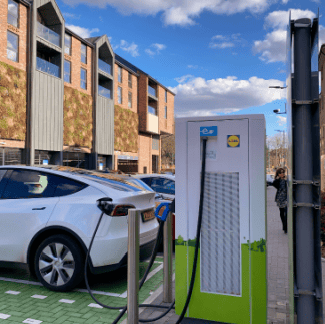Land Planning Project Offers Heart and Soul to Communities
by Louisa May
 The Orton Family Foundation is changing the way communities approach land planning, and they’re doing it with heart and soul.
The Orton Family Foundation is changing the way communities approach land planning, and they’re doing it with heart and soul.
Founded in 1995 by Noel Fritzinger of Weston, Vermont and Lyman Orton, proprietor of mail- order business The Vermont Country Store, the foundation helps small cities and towns look with more than hope to the future. Citizens and their leaders are given tools, research, guidance and capital. The idea is to promote inclusive decision making and land use planning by getting people to talk about what’s important to them in their communities.
The essence of this process, and this is where the heart and soul conversation takes center stage, is to ask three questions of every person in the community and the community as a whole:
- Why did you come here?
- Why are you still here?
- What will keep you here?
This is a great way to get people thinking about what’s unique about their home place, whether it’s the physical landscape, economic attributes, or values that residents hold dear.
Being part of the planning process doesn’t appeal to everybody- to many of us it sounds like a lousy way to spend an evening, but that’s because the process doesn’t always convey just how much planning decisions are going to affect our day to day lives, our livelihoods, and that of future generations.
Changes in our neighborhood seem to leap out at us: Where did that building come from? When did that strip center get torn down? What’s coming?
Julie Barstow, Director of Communications for Orton Family Foundation, sees the problem with traditional approaches to land use planning. They don’t take into account residents’ sense of place. “We’re trying to make a process where more people who don’t go to meetings and aren’t speaking up and are not activists have a chance to express what is important to them.”
Biddeford, Maine, Damariscotta, Maine, Golden, Colorado, and Victor, Idaho, were the first communities to be awarded $100,000 each and staff support from the Orton Foundation to help them tap into the heart and soul of their communities and discover what citizens valued and wanted for the future.
In Biddeford, people wanted help co-ordinating mill redevelopment projects. Their community felt fragmented, and there was an absence of connection between downtown, beach, and university neighborhoods. A downtown master planning project includes new housing and businesses, artist lofts and galleries in one million square feet of mill space slated for redevelopment. This redevelopment plan will help connect neighborhoods and stabilize the local economy.
Damariscotta, Maine is a small community of 2000 year round residents. The town is situated twelve miles from the ocean but sits along a busy highway. In 2005, the community realized they were ill -equipped to deal with growth pressures when a big box store wanted in. A special election was held, limiting the cap on big box stores at 35,000 square feet. By strengthening long range planning processes, residents hope to build partnerships and trust among businesses, government, and non-profit groups to ensure a sustainable future for their town. Downtown revitalization is a priority as is waterfront development. Residents realize that the key to pulling it all together is engaging a broader group of community members in the planning process.
The Golden, Colorado Heart and Soul Project tackles housing affordability, neighborhood identity and connectivity, and public transportation and services. Golden, population 18,000, is on the western edge of the Denver metropolitan area but maintains a distinct western character. Two mesas create mountain /valley topography, and residents want to preserve the visual beauty of the area. Golden Project goals include developing a Golden Vision 2030 plan using input from as much of the community as possible to develop and adopt code, policy, and capital investment planning in order to achieve 2030 Vision. The City is also using information received from a 2006 citizen survey to help create a values based community master plan.
Victor, Idaho, population 1,500, is also trying to maintain the western character of their town in a resort area of the Teton Valley. Absentee ownership is an issue, but old and new residents have come together to develop a comprehensive plan to ensure the resilience and managed growth of the area. New private/ public partnerships have been created that will create new business opportunities for the downtown area. Victor’s goal is “to go beyond land use and design and create opportunities to grow a more economically, ecologically, and socially diverse community.”
The project I love best is in Starksboro, Vermont. This town of less than 2000 people has partnered with Orton Family Foundation, Vermont Land Trust, and nearby Middlebury College. The Art and Soul Civic Engagement Project includes a class taught at Middlebury by Professor John Elder (Envs 0350- Stories From a Vermont Town) and an artist in residence to engage townspeople of all ages in art that tells a story and reflects individual and collective values.
The project has three parts:
Gathering Stories– The Middlebury students interview the residents about their love of land, their sense of place, and bring the stories back to the community to be used to help plan for Starksboro’s future.
From Stories to Art – As a way of engaging disparate groups of the community, the artist in residence uses music, dance, sculpture, photography, whatever medium it takes to get people to think and talk about what’s important to them and what they want for the future of Starksboro.
Taking Action– Everybody has a voice. Having reflected, it’s time to plan. Residents will develop a master plan for Starksboro and make choices and decisions that will shape land use in the future. The challenges are big. This community is working with growth issues that may fundamentally change the nature of the town. The population is aging, and Starksboro has one of the highest per capita densities of low income housing in the state.
The Orton Foundation is working creatively with people to build communities that will endure, but I think just hearing about these heart and soul projects reminds us that our voices count. If we don’t tell our city planners what we want, somebody else will decide, and we may not like the result. Town meeting? Okay, I’ll put down the Philip Craig mystery I’m reading and be there.
Check out our Green Pages for information on money saving tips that help the environment. Once there, click on the Green Forum for more articles by feature writer Louisa May.
American Apartment Owners Association offers discounts on products and services related to your commercial housing investment, including real estate forms, tenant debt collection, tenant background checks, insurance and financing. Find out more at www.joinaaoa.org.
To subscribe to our blog, click here.















 Accessibility
Accessibility